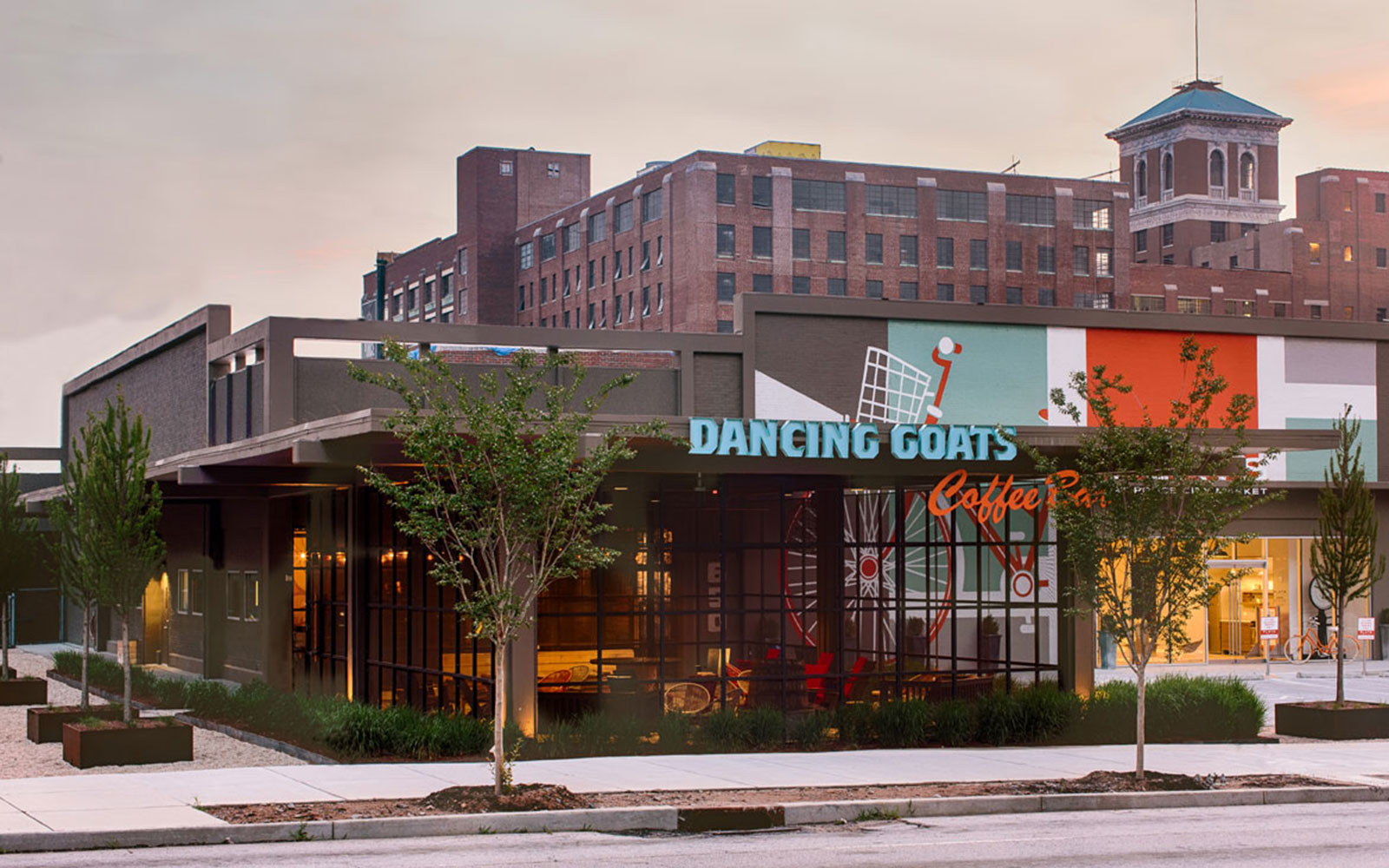
With new attractions, public transportation, food halls, and shopping districts, here's why visiting the capital of Georgia is a peachy idea.
The capital of Georgia is out to prove it’s the capital of the Southeast. Since 2014, Atlanta has seen the opening of two major attractions and two sprawling food halls, plus a highly anticipated streetcar system cling-clanging its way through downtown. Add to all that a crackling culinary scene, a new pedestrian trail snaking its way beneath the skyline, and easy accessibility via the world’s busiest airport—and it’s easy to see why a visit to Atlanta is a peachy idea.
1. In June 2014, the $68 million National Center for Civil and Human Rights welcomed its first visitors to a landmark downtown building designed by Phil Freelon. Emotional exhibits include one by Tony award–winning playwright George C. Wolf about the American Civil Rights movement, in which visitors pull up stools at a mock lunch counter and imagine the pain faced by peaceful protestors while their seats rattle from fictional kicks and their headphones echo with abuse.
2. Just a short stroll across Centennial Olympic Park, the College Football Hall of Fame pays homage to a lighter subject: the unofficial religion of the South. You won’t find plaques or busts in the Hall of Fame gallery; instead, you’ll search 10 flat-screen digital displays for statistics on your favorite players. Even your ticket is interactive: When you arrive, you’ll designate your favorite team, and exhibits throughout the building will offer information on the people and games you care about most.
3. Last December, Atlanta christened its first streetcar since 1949. The climate-controlled electric car takes passengers on a 2.7-mile loop, dropping them near attractions such as the National Center for Civil and Human Rights, the College Football Hall of Fame, the historic Sweet Auburn Curb Market and the King Historic District. Each one-way trip is free for kids and $1 for adults, though through December 31, there's a special where it's free for adults, too. That makes a ride an inexpensive excursion in its own right.
4. Ponce City Market (pictured) is the largest adaptive reuse project in Atlanta history, transforming the centrally located Sears, Roebuck & Company building into 300,000 square feet of office, residential, retail, and restaurant space. Anchoring it all is the Central Food Hall, with restaurants from the likes of Anne Quatrano, Linton Hopkins and Sean Brock—the city's James Beard darlings. Five food purveyors are open, with more coming throughout the fall.
5. Less than two miles south on the BeltLine, Krog Street Market features sixteen food and beverage outposts, from a dumplings stall helmed by relative unknowns to a Mexican restaurant operated by powerhouse restaurateur Ford Fry. Located in a nineteenth century stove warehouse, the development opened last year after the property was purchased from Tyler Perry, who was using the 200,000-square-foot space as a movie studio.
6. Once it was tony. Then it was tired. Now Buckhead is trending again, thanks in no small part to the new Buckhead Atlanta development, which created six blocks of restaurants and retail along Peachtree Road.
7. Here you’ll find The Southern Gentleman, a locally owned gastropub featuring cheeky Southern fare like “duck & dumplings,” more than seventy-five whiskeys, and preppy touches like seersucker window treatments.
8. After dinner, stroll to the flagship store of Atlanta-based Bella Bag, where you can purchase certified pre-owned handbags from Chanel, Louis Vuitton, and Prada for a fraction of the retail cost.
9. For six stories of home décor inspiration, walk across Peachtree and enter RH Atlanta: The Gallery at the Estate—the largest Restoration Hardware store in the world, complete with a fifty-foot reflection pool.
10. We already knew the Atlanta BeltLine was one of the most comprehensive urban renewal efforts in the United States, repurposing 22 miles of abandoned railroad corridors into a network of parks and trails. What we didn’t know was how incredibly popular it would be. Any given day, the trails fairly buckle beneath bikers, runners, walkers, and gawkers.
11. In once-gritty neighborhoods, restaurants have two-hour waits for BeltLine-facing tables (we’re looking at you, Ladybird). On hot afternoons, King of Pops vendors along the pathways run out of paletas. And if there’s a festival going on, forget about it: Come early or don’t come at all.